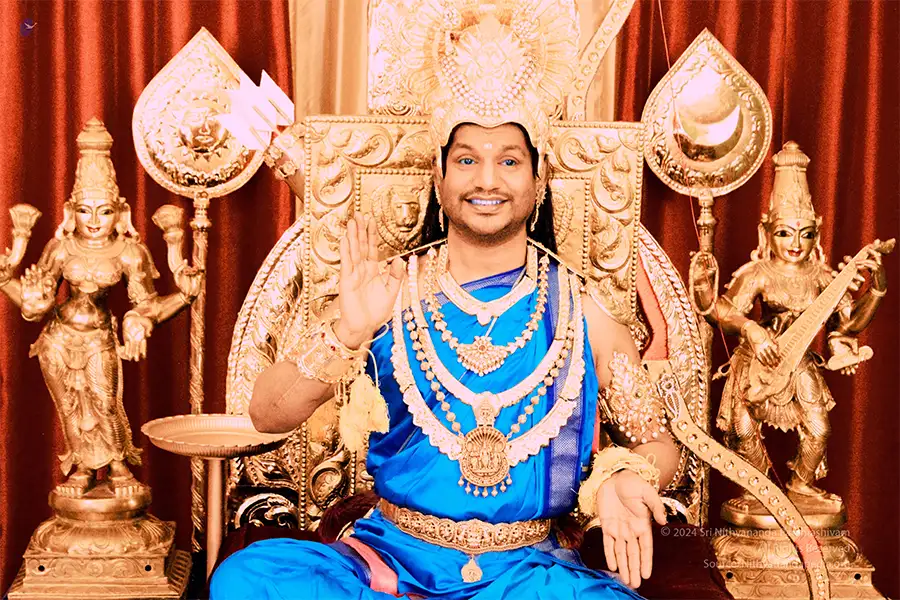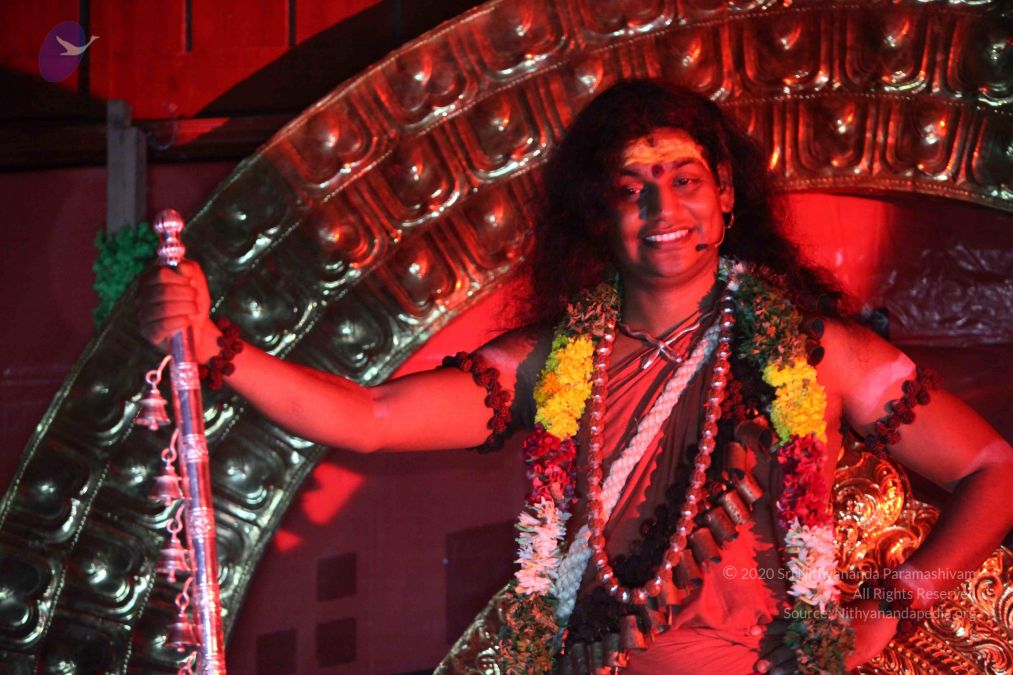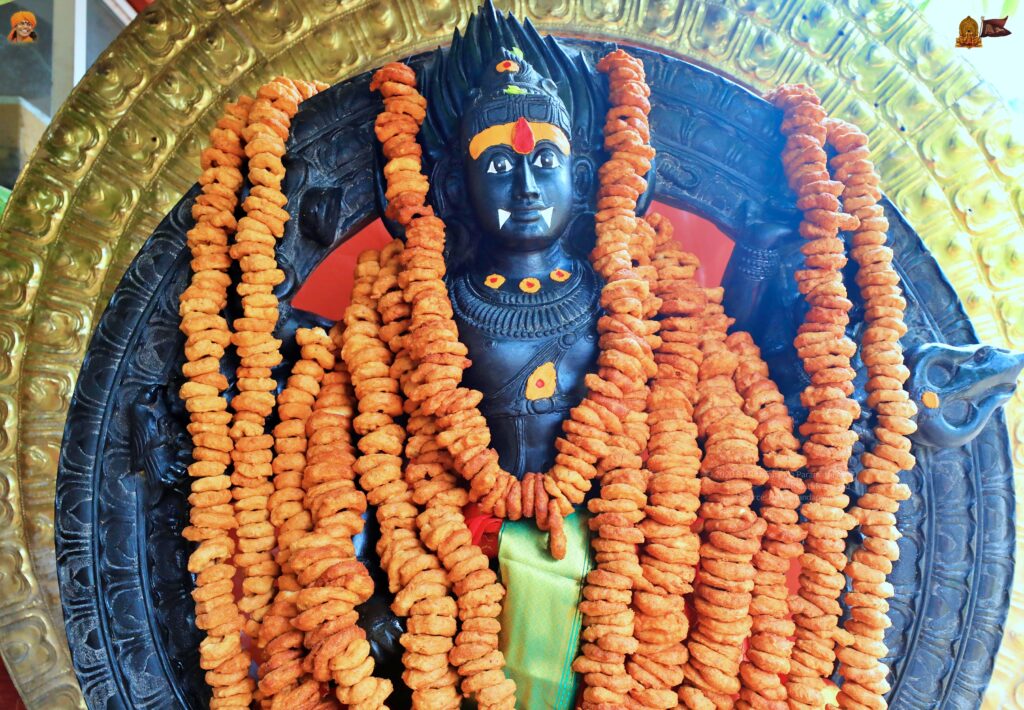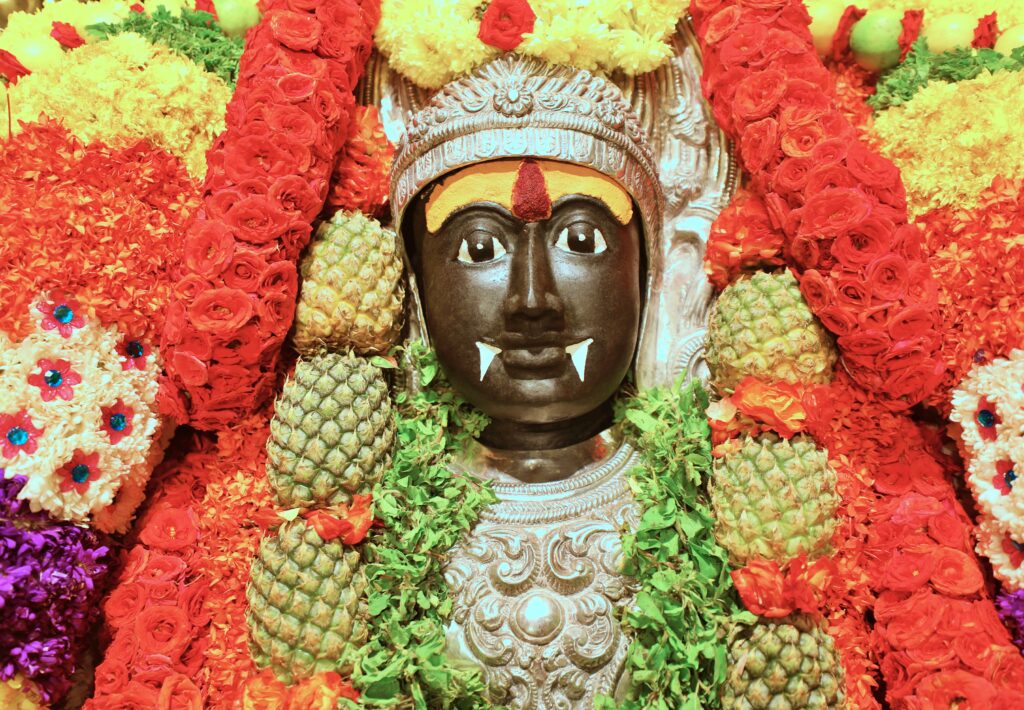This celebration includes the ritual of Sri Sita Rama Kalyanam – the grand cosmic wedding ceremony of Bhagavan Sri Rama Chandra Prabhu and Devi Sita, the manifestation of Devi Lakshmi, the consort of Bhagavan Mahavishnu.
Adi Kailasa Nithyananda Sarvajnapeetham is the place where Sri Rama spent the best part of His life, living with Devi Sita, Lakshmana, the Sapta Rishis, and Paramashiva Himself. The Svayambhu Nithyanandeshwara Paramashiva Linga, the principal deity of Nithyanandeshwara Paramashiva Devalayam, was personally worshiped by Sri Rama, alongside Sita and Lakshmana, and later by Sri Hanuman, during their stay here.
The original descriptions in the Ramayana and the Upanishads match perfectly, including the geography, seasons, seasonal changes, birds, and flowers, even noting the birds that do not enter this zone. When Sri Rama Chandra Prabhu resided here with Devi Sita, a demon in the form of a crow, Kakasura, attempted to harm Sita. Sri Rama vanquished the demon. Since then, not a single crow has flown over the Ramanagara Hill, where this incident took place. Adi Kailasa is home to a thousand-year-old sacred Kalpavriksha – the wish-fulfilling Banyan tree. Under this very Banyan tree, Sri Rama, as the first Vyasa, compiled the 108 Upanishads and presented them as the Muktikopanishad to Sri Hanuman – his supreme devotee, making Adi Kailasa a tirtha sthala – a pilgrimage center not only for human beings but also for beings from Varanasi. This connection is so profound that even now, monkeys come to worship the Chinmaya Vigraha of Dakshinamurthy under the Kalpavriksha. They do not visit any other deity but only sit at the feet or in the lap of Dakshinamurthy to offer puja in their own way.
The Agamas clearly record that Sadāshiva revealed the Agamas and Vedas to the Sapta Rishis, south of Kailasa Parvata, under the Banyan Tree. The Ramayana describes how, with the Sapta Rishis, Ramachandra Prabhu stayed and realized all the Vedas, receiving all revelations of the Agamas and Vedas from Sadāshiva. Therefore, both Agamic and Puranic references confirm that Adi Kailasa’s geography matches both narratives uniquely. Some locations match one narrative, and others match a different one, but only the geography of Adi Kailasa in Ramanagara near Bengaluru matches both. Sri Rama, being a great devotee of Shiva, always stayed near Shivalayas to perform His Shiva puja regularly. This is why He chose this place for His stay. At the Ramanagara Hill, one can see seven huge rocks representing the Sapta Rishis, and under each rock, there is a large cave where each Rishi resided. The Sapta Rishis lived here with Sri Rama’s family and received all the Vedas and Agamas from Paramashiva.



